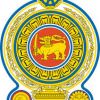මැලේරියා මර්දන ව්යාපාරය
The predecessor of the Anti Malaria Campaign was first established in 1911 in Kurunegala through the setting up of a field unit. Subsequently, several more units for malaria control were established in other highly malarious parts of the country. A dramatic reduction of the countrywide malaria incidence was achieved after the introduction of house spraying with DDT (dichloro diphenyl trichloroethane) in 1946. Based upon the success achieved through DDT house spraying a national malaria eradication program was launched in 1958, in keeping with the then WHO recommendations.
A near eradication status was reached in 1963 (only 17 cases detected). However due to relaxation of surveillance a massive malaria epidemic was experienced during the years 1967 – 1969. Several factors were thought to be contributory towards the failure. Persistence of several undetected foci of malaria transmission, extensive intra-country population movements particularly related to gem mining, lack of adequate financial support from the authorities at the time when the incidence was extremely low are thought to have contributed to this.
The program which continued on eradication principals for several years was subsequently, reoriented as a control program which included many elements of the earlier eradication program. During the past two decades or more, the program had been functioning as a control program geared at achieving set objectives. Operationally, the Anti Malaria Campaign had a centralized structure till 1989 and functioned as a vertically run program.
However, in 1989 the program was transformed into a decentralized campaign which was implemented by 8 provincial programs under the technical guidance of National Anti Malaria Campaign Directorate.
During the long documented history of malaria in Sri Lanka several major epidemics were experienced. The most devastating of these was the epidemic of 1934 – 1935 during which the districts in the wet zone and the intermediate zone experienced high incidence resulting in nearly 1.5 million patients and 80,000 deaths. In the last two decades major epidemics were encountered during the years 1987 and 1990/92. Major natural determinants of malaria epidemics in Sri Lanka have been the monsoon rains especially the North East monsoon, and also unusually dry weather leading to pool formation in rivers and streams.
The conflict situation that affected mainly the Northern and Eastern provinces during much of the last three decades also emerged as a major determinant of malaria in the country during the recent past. The conflict has resulted in an important change in the epidemiological pattern of malaria in Sri Lanka. The Northern and Eastern districts which previously had a very low incidence of malaria have shown a sharp increase in malaria incidence recorded particularly during the late nineties.
The Ministry of Health launched a national malaria elimination programme in 2009 after the successful end to



